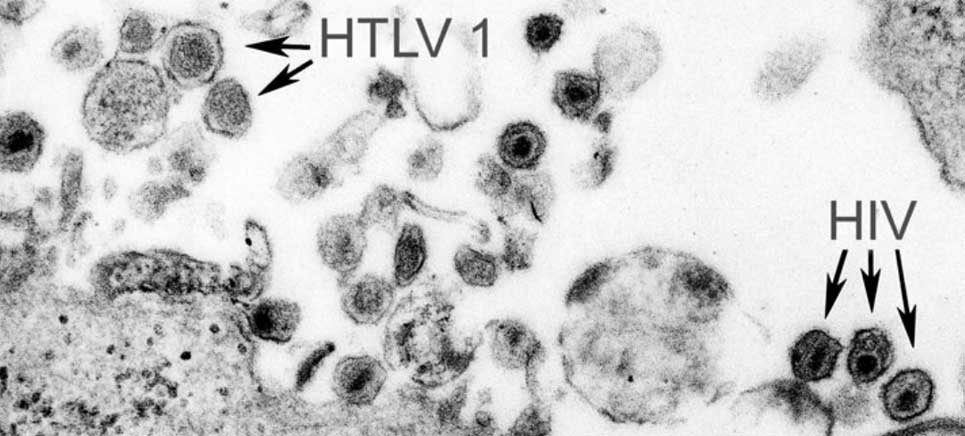Human Immunodeficiency Virus (HIV) is a virus that damages the immune system of a person. It attacks the good cells which help the body in fighting infection. Consequently, an HIV patient becomes vulnerable to other diseases.
An HIV positive person often succumbs at later stages not because of HIV but due to other diseases like tuberculosis, hepatitis, etc.
HIV has no cure but more effective management of HIV is possible now.
This restricts the HIV patient to develop Acquired ImmunoDeficiency Syndrome (AIDS), which is a more critical stage of HIV.
Difference between HIV and AIDS
AIDS is the last stage of HIV Infection.
HIV virus damages the immunity system of the body and it eventually develops AIDS.
Thus, when HIV is not treated or managed, it leads to AIDS.
Nowadays, with proper medication and treatment, HIV progression is controlled due to which patients do not develop AIDS.
ALSO SEE: World AIDS Vaccine Day
Transmission: What causes AIDS?
HIV is transmitted through body fluids of an HIV positive person. The modes of transmission include:
Infected Blood
Transmission of HIV infected blood through medical process like transfusion, organ transplantation or even otherwise, may lead to transmission of the infection.
Infected Needles/Syringes
One of the most frequent ways of rapid HIV infection is sharing of infected needles, applying used infected syringes or using infected drug use equipment.

By Birth
HIV also can be spread from HIV positive mothers to newborn babies.
Breastfeeding
HIV is likely to be transmitted through breastfeeding of milk by an HIV positive mother to her newborn.
Sexual contact
This is one of the most common ways of HIV transmission. If an HIV positive person get into sexual contact without protection, he is likely to pass on the HIV infection to a non-infected partner. The infection is likely to spread through fluids like vaginal secretion and semen.
Accidental Injuries
Sometimes healthcare workers or caretakers of HIV positive patients accidentally come in contact with them in such a way that exchange of body fluid takes place, the transmission of virus may take place in such circumstances. However, this is rare.
HIV is not transmitted through normal day-to-day contacts like kissing, hugging, shaking hands or sharing food with an HIV positive person.
We certainly need to be careful about the infection but we should refrain ourselves from being paranoid about it.
What are symptoms of HIV and AIDS?
An HIV positive person is likely to experience flu-like symptoms such as:
- Fever
- Chills
- Muscle aches
- Sore throat
- Fatigue
- Rash
- Night sweats
- Mouth ulcers
- Swollen lymph nodes
If an HIV positive person fails to receive proper treatment, the virus eventually damages the immunity of a person and he/she progresses toward AIDS.
The symptoms of AIDS include:
- Recurring fever
- Weight loss with rapid speed
- Pneumonia
- Extreme Fatigue
- Profuse night sweats
- Prolonged swelling of the lymph glands in the armpits, groin, or neck
- Diarrhea (long lasting)
- Memory loss, depression, and other neurological disorders
- Sores of the mouth, anus, or genitals
- Blotches on or under the skin or inside the mouth, nose, or eyelids.
Treatment of HIV
We are all well aware that HIV has no cure. Until the vaccine is discovered, HIV treatment is more about management of the condition and controlling its progress. Usually, Antiretroviral therapy or ART is given to an HIV patient to maximally suppress the virus and stop the progression of the disease. ART helps an HIV patient in living a long and healthy life. It also prevents sexual transmission of HIV virus in a patient’s partner to some extent. Pre-exposure prophylaxis (PrEP) and post-exposure prophylaxis (PEP) are also methods used in addition to ART for an effective prevention of HIV transmission through sex or drug use.
Use the citation below to add this article to your bibliography
"HIV AIDS: Meaning, Full Form, Symptoms and Cure." Dashamlav.com. Web. 27 July 2024. <https://dashamlav.com/hiv-aids-meaning-full-form-symptoms-cure/>
Dashamlav.com, "HIV AIDS: Meaning, Full Form, Symptoms and Cure." Accessed 27 July 2024. https://dashamlav.com/hiv-aids-meaning-full-form-symptoms-cure/
"HIV AIDS: Meaning, Full Form, Symptoms and Cure." (n.d.). Dashamlav.com. Retrieved 27 July 2024 from https://dashamlav.com/hiv-aids-meaning-full-form-symptoms-cure/
